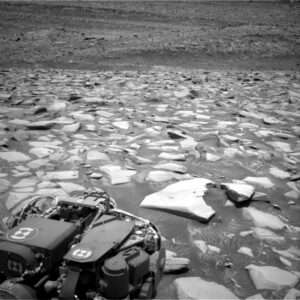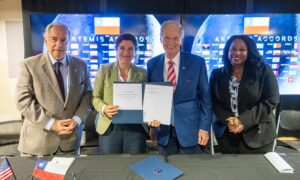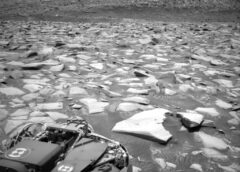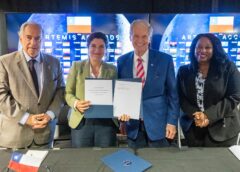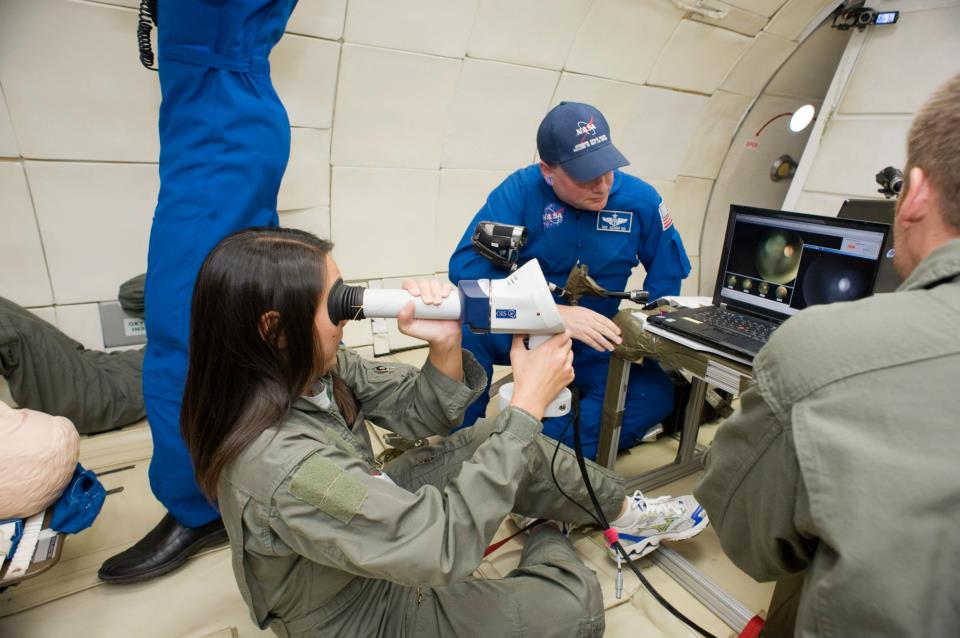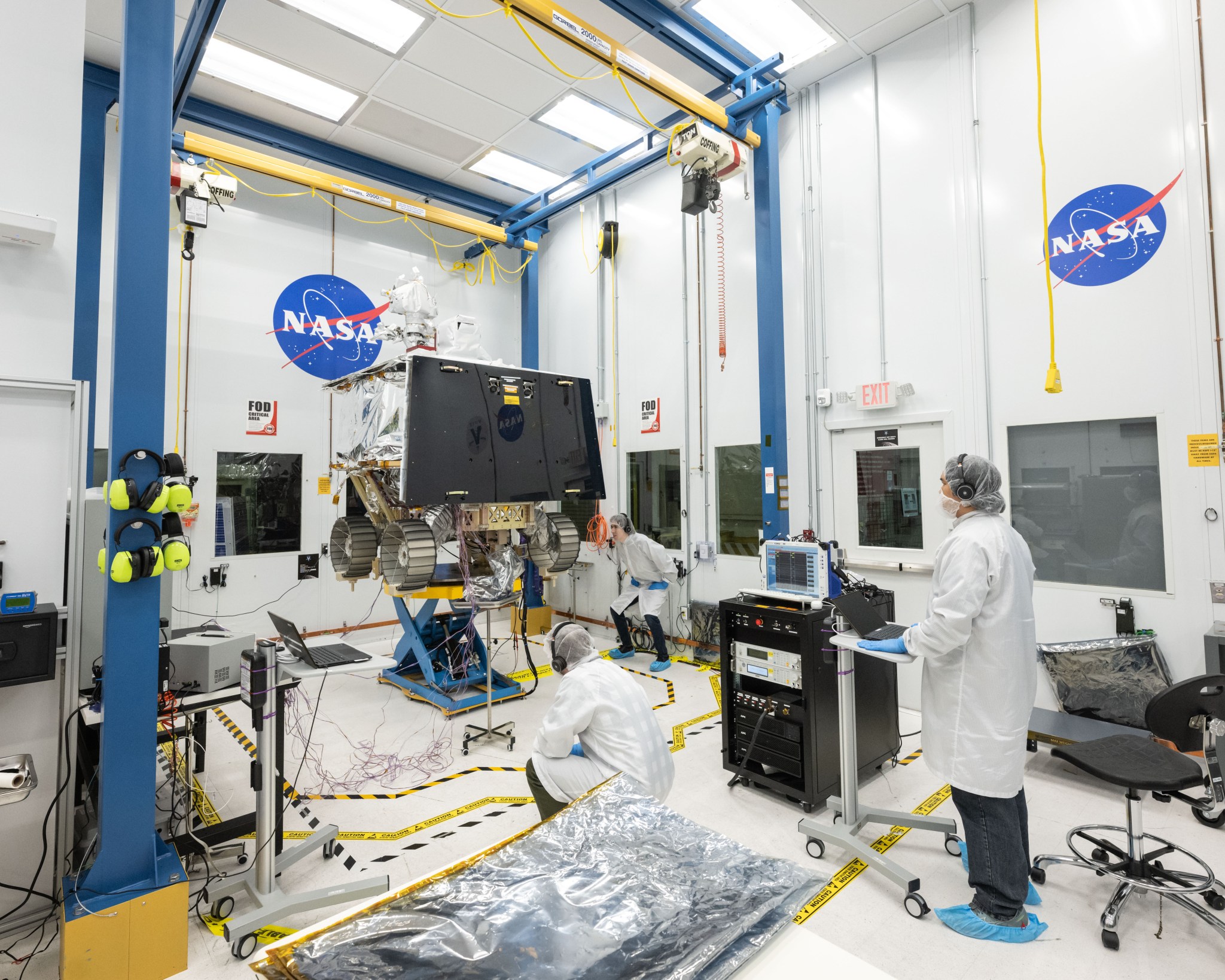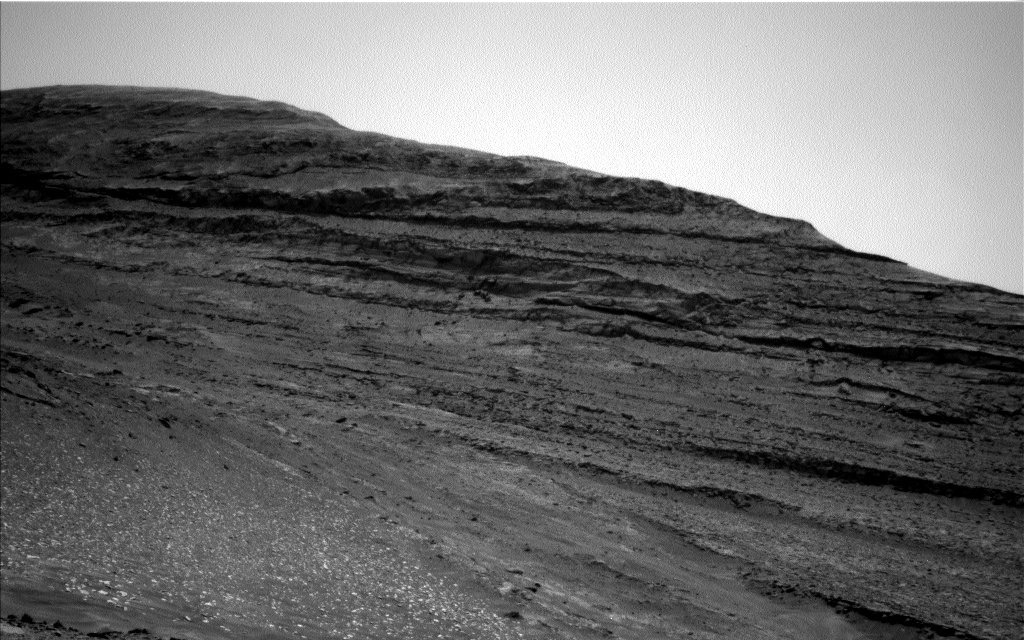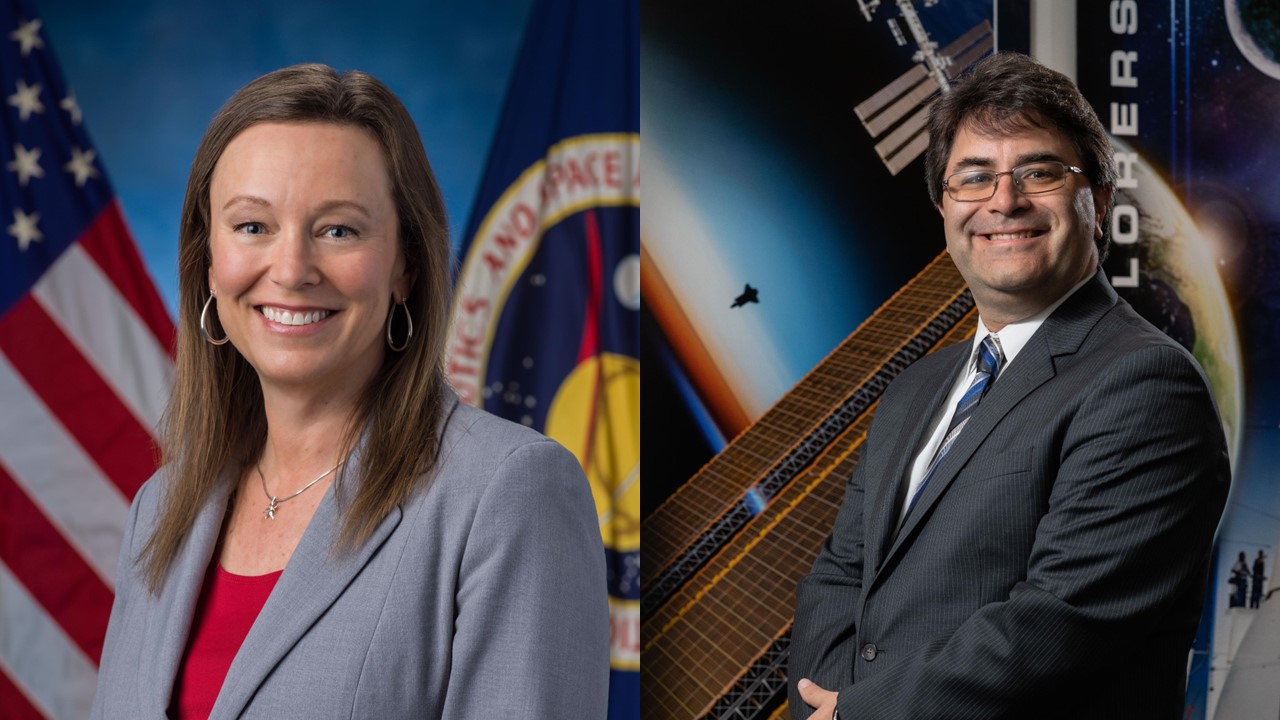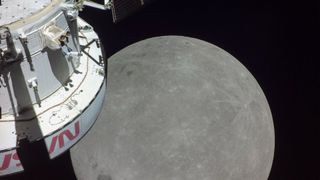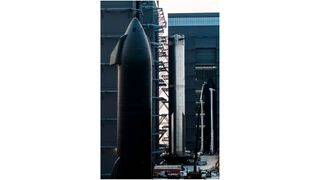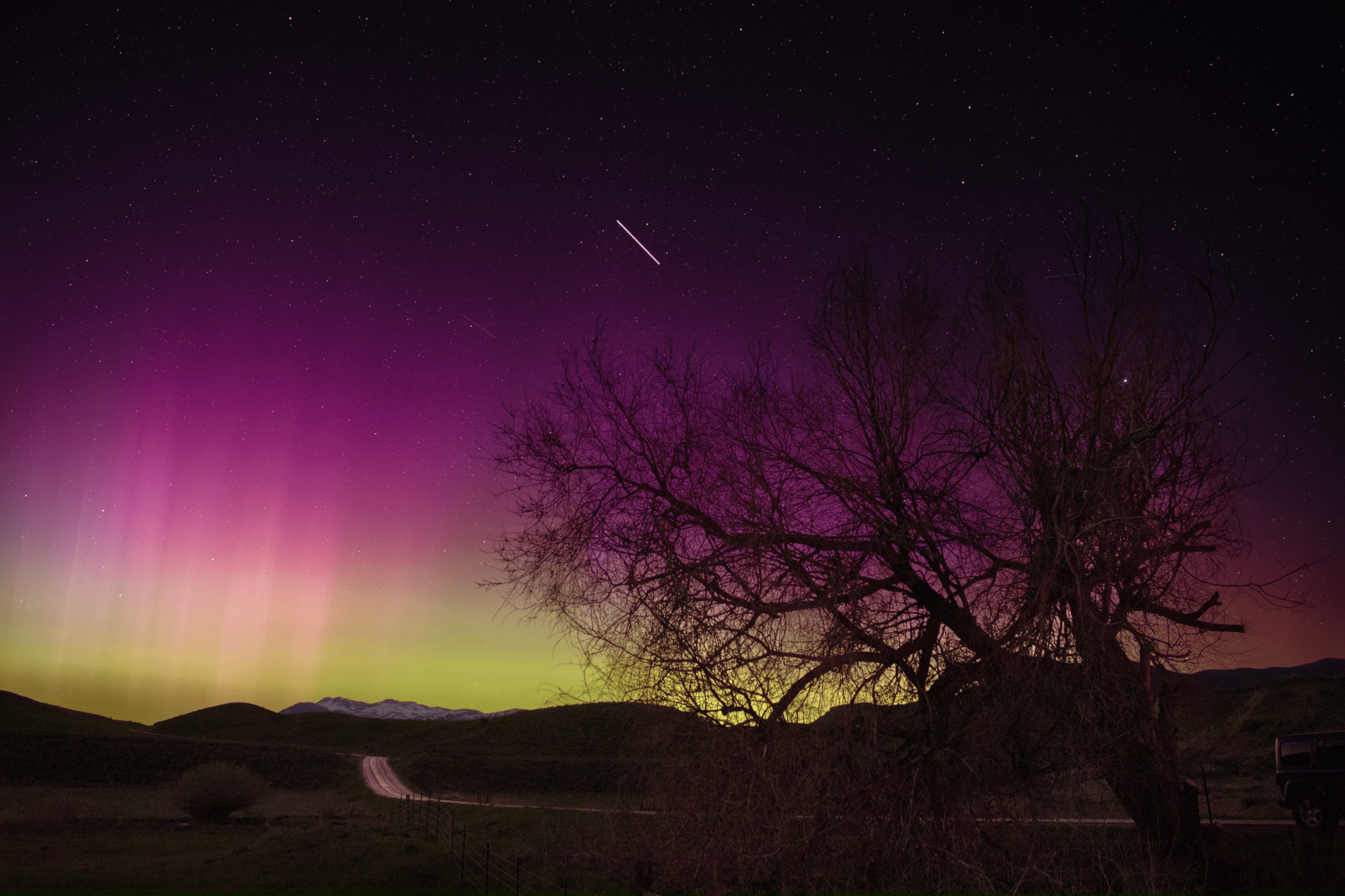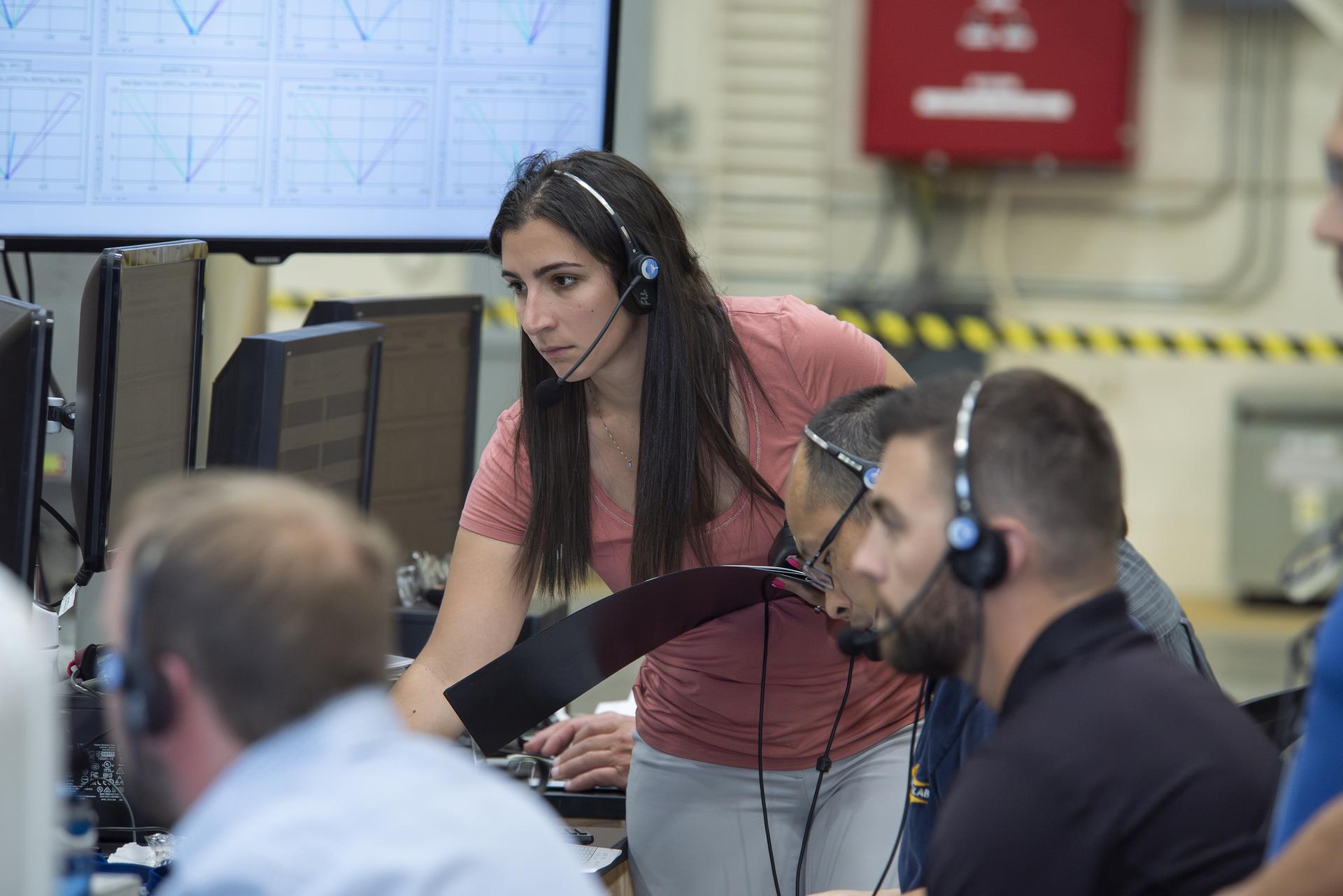Eleasa Kim, stationed at NASA’s Marshall Space Flight Center, leads the Commercial Low Earth Orbit Development Program (CLDP) payload operations at Johnson Space Center, with 18 years of mission support under her belt. Her roles have included biomedical engineer flight controller, payload safety engineer for Artemis I, planning and analysis branch operations discipline lead, and glovebox integration engineer, with each enriching her understanding of engineering, safety, and leadership. Kim is currently working to ensure a smooth transition to commercial space operations for the science being conducted in microgravity for the…
Read MoreMission Manager Update: VIPER Rover Approved to Move into Environmental Testing!
Engineers test the VIPER rover’s wheel movement and rotation in a clean room at NASA’s Johnson Space Center in Houston. NASA/Helen Arase Vargas While NASA’s VIPER team has been focused on building the flight rover that will go to the South Pole of the Moon, the team has also been making preparations for environmental testing of the rover. In April, the VIPER team passed a System Test Readiness Review, exploring the readiness of the facilities, procedures, and staff to move into stress-testing the VIPER rover. These environmental tests are important…
Read MoreSols 4184-4185: Look Near! Look Far!
3 min read Sols 4184-4185: Look Near! Look Far! This image was taken by Left Navigation Camera onboard NASA’s Mars rover Curiosity on Sol 4183 (2024-05-13 02:30:29 UTC). NASA/JPL-Caltech Earth planning date: Monday, May 13, 2024 Today I’ve chosen to show off a spectacular image of ‘Texoli butte,’ but I’m rather biased in my assessment of its beauty because I am currently part of the team studying it. What continues to marvel me is Curiosity’s incredible suite of instruments that can not only help us to assess the rocks around us,…
Read MoreNASA Names Deputy Station Manager, Operations Integration Manager
NASA has selected Dina Contella, left, as the International Space Station Program deputy manager, based at the agency’s Johnson Space Center in Houston. Contella succeeds Dana Weigel, who became the space station program manager in April. NASA has also selected Bill Spetch, right, as the space station operations integration manager, a role most recently held by Contella. Credits: NASA NASA selected Dina Contella as the deputy program manager and Bill Spetch as the operations integration manager for the agency’s International Space Station Program, effective Sunday, June 2. “Dina’s depth of…
Read MoreThis time, we take it from no one: Why opening the High Frontier of space can be different (op-ed)
As we move closer to the greatest revolution of all time, the opening of the High Frontier of space to humanity, some assert this is somehow a bad thing. Based on inaccurate understandings of history and misplaced projections of those misunderstood times to the future, they are spreading ridiculous and possibly dangerous ideas that what is happening in what I call the Space Revolution is a repeat of the conquests and colonization of history. Wrong. Aside from the fact that we are not taking space from anyone, this time, for…
Read MoreWhat Is… Earth’s Atmosphere?
10 min read Preparations for Next Moonwalk Simulations Underway (and Underwater) The sun’s last rays illuminate Earth’s atmosphere in this photograph of an orbital sunset from the International Space Station as it soared 261 miles above the Pacific Ocean off the northern coast of Japan. The layers are clearly visible as thin bands extending from the surface out into space. NASA When we talk about the Earth’s Atmosphere, what do we mean? Imagine a layer cake, wrapping around the Earth. That is essentially what the Earth’s atmosphere is like: layers…
Read More‘Kingdom of the Planet of the Apes’ reinvigorates an aging ‘Apes’ franchise (review)
One of the most underappreciated and longest-running franchises in Hollywood history is “Planet of the Apes,” that imaginative science fiction property which began with the Charlton Heston-led classic from 1968 directed by Franklin J. Schaffner. Adapted from the 1963 French novel by Pierre Boulle, the plotline centered around astronauts crash landing on a planet in the far future where intelligent simians rule the world and humans are mute feral creatures subjected to all kinds of cruelties. The twist ending of course is that this is no remote alien world,…
Read MoreSpaceX Starship’s next launch ‘probably 3 to 5 weeks’ away, Elon Musk says
We’re likely still a month or so away from the next launch of SpaceX’s Starship megarocket. That was the timeline Elon Musk offered in a post on X over the weekend, saying Starship’s next test flight is “probably 3 to 5 weeks” away. “Objective is for the ship to get past max heating, or at least further than last time,” the billionaire entrepreneur added. The 400-foot-tall (122 meters) Starship is the biggest and most powerful rocket ever built. It consists of two elements, both of which are designed to be…
Read MoreAurora over Idaho
NASA/Bill Dunford The aurora paints the sky near Malad City, Idaho, red, purple, and green in this May 11, 2024, image. This aurora was sparked by multiple eruptions of solar material—called coronal mass ejections—colliding with Earth’s magnetic field. This interaction with Earth’s magnetic field can spark a geomagnetic storm and send particles from space rocketing down magnetic field lines toward Earth, where they excite molecules in our planet’s upper atmosphere, releasing light and creating auroras. Image Credit: NASA/Bill Dunford
Read MoreMeet NASA Women Behind World’s Largest Flying Laboratory
5 min read Preparations for Next Moonwalk Simulations Underway (and Underwater) NASA’s DC-8 aircraft – the world’s largest flying science laboratory – began its science missions in 1987 and since then, has flown in service of the science community over places like Antarctica, Greenland, and Thailand. Aircraft like the DC-8 have enabled scientists to ask questions about life on Earth and explore them in a way that only NASA’s Airborne Science program can make happen. After 37 years, the DC-8 will retire to Idaho State University, where it will serve…
Read More
